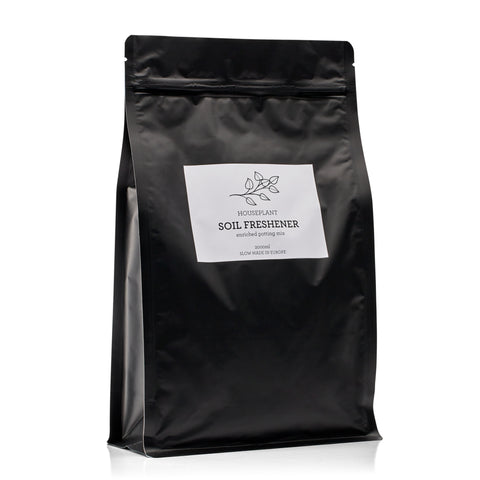Goodbye Winter. Hello Spring!
Late winter is often the most challenging time to keep your plants happy and healthy. After a long Winter, plants can be weakened, so with Spring just around the corner, it's important that you help them prepare for the new growing season to come.
The first tip we give you is that, being a time of transition, redouble your attention to changes that may occur, such as new shoots, old leaves, or roots coming out of the pot.
Give more water
With the days getting longer and temperatures rising, you may start to feel that your plants are in need of more water. The best time to water your plants is first thing in the morning, when temperatures are milder and there is less evapotranspiration (i.e. less water evaporation and less plant transpiration).
But being a transitional season and to avoid overwatering, make sure you gradually increase the frequency of watering and always check with your “finger gauge” whether or not it is time to water. If you see that the potting soil is dry and the leaves are curling or falling, water more frequently. If, on the other hand, the potting soil remains moist for several days, water less frequently.
Adjust light
During the Winter it is important that your plants get as much light as possible, which is why, most likely, you brought them very close to the windows.
Now, with the days getting longer and the sun's rays falling more intensely, some of your plants may start to suffer. You may have to adjust the light your plants receive by readjusting their place in your home.
In rooms facing south and west, you may need to place them east (or even north), if possible. You can also retreat them into the room, moving them a little away from the window, or leave a curtain always drawn, filtering the light.
Fertilise your plants
As your plants are confined to a finite soil volume, the nutrients they will have access to will be consumed and lost by the irrigation water that runs through the drainage holes of the pot. In addition, when Spring arrives and until mid-Autumn, your plants enter a new growth cycle in which the need for nutrients is greater.
Consider the fertilisation of your plants as vitamins, because their true food is light. However, fertilisation will help them grow stronger and healthier.
Use our Soil Booster to add organic matter to your potting soil. It increases the activity of beneficial microorganisms, enhancing the nutrient availability for your plants. Spread a portion on the pot surface around the plant and lightly mix it into the potting soil.
Give them a new home
In nature, plants live freely with no defined barriers to root development, having access to nutrients and water present in the soil. But in your home, in the confined environment like a pot, nutrients need to be added periodically, so repotting, along with good fertilisation, is necessary for your plants to grow happy and healthy.
The ideal time to repot your plants is late Winter / early Spring, with a new growth cycle starting. But since repotting is a time of stress for your plants, you should only do it if you observe some signs that indicate that your plant needs a new home.
Use our Soil Freshener, a peat-free mix to repot outgrowing house plants or to refresh aged potting mixes of heavier large plants. Let them grow!




